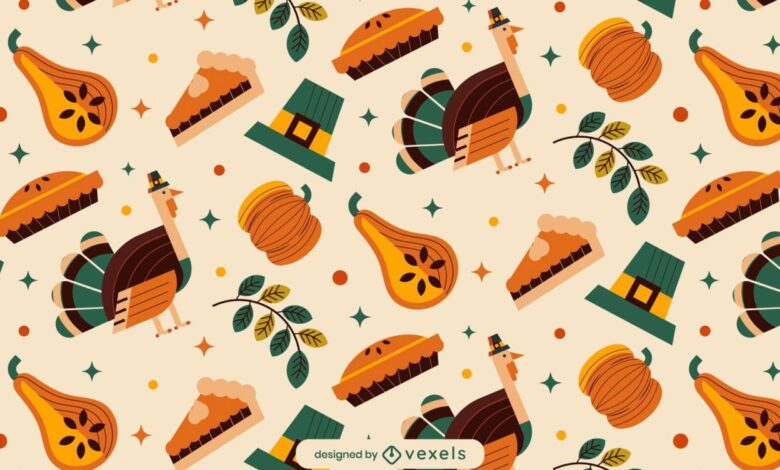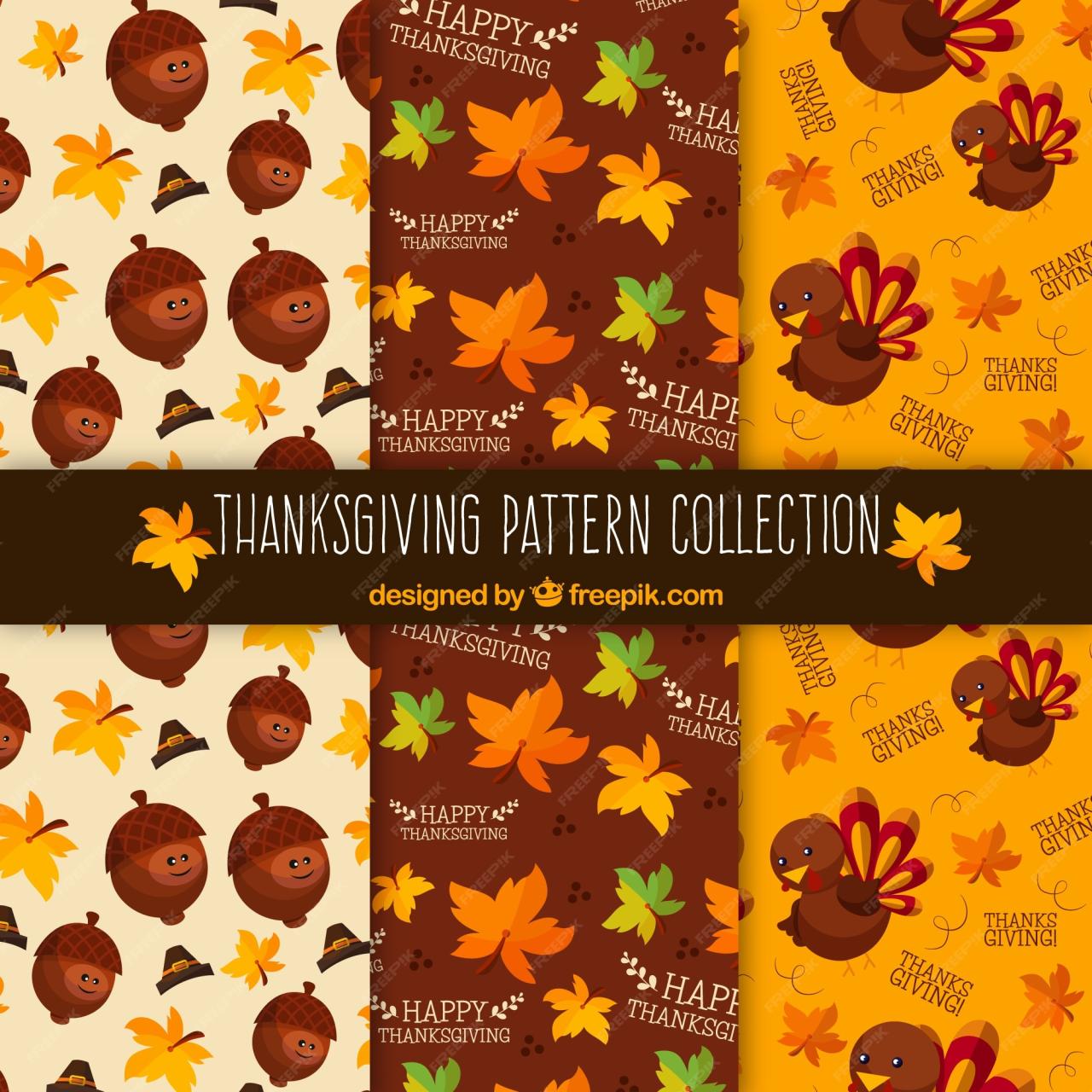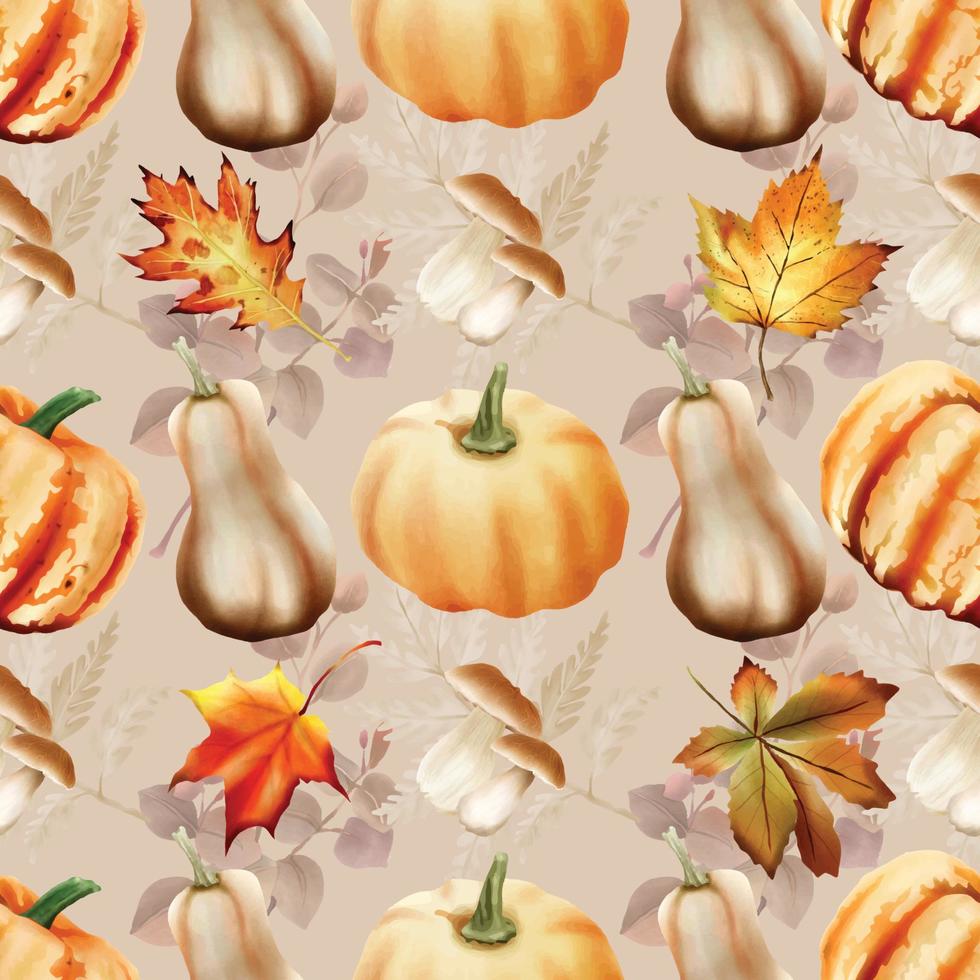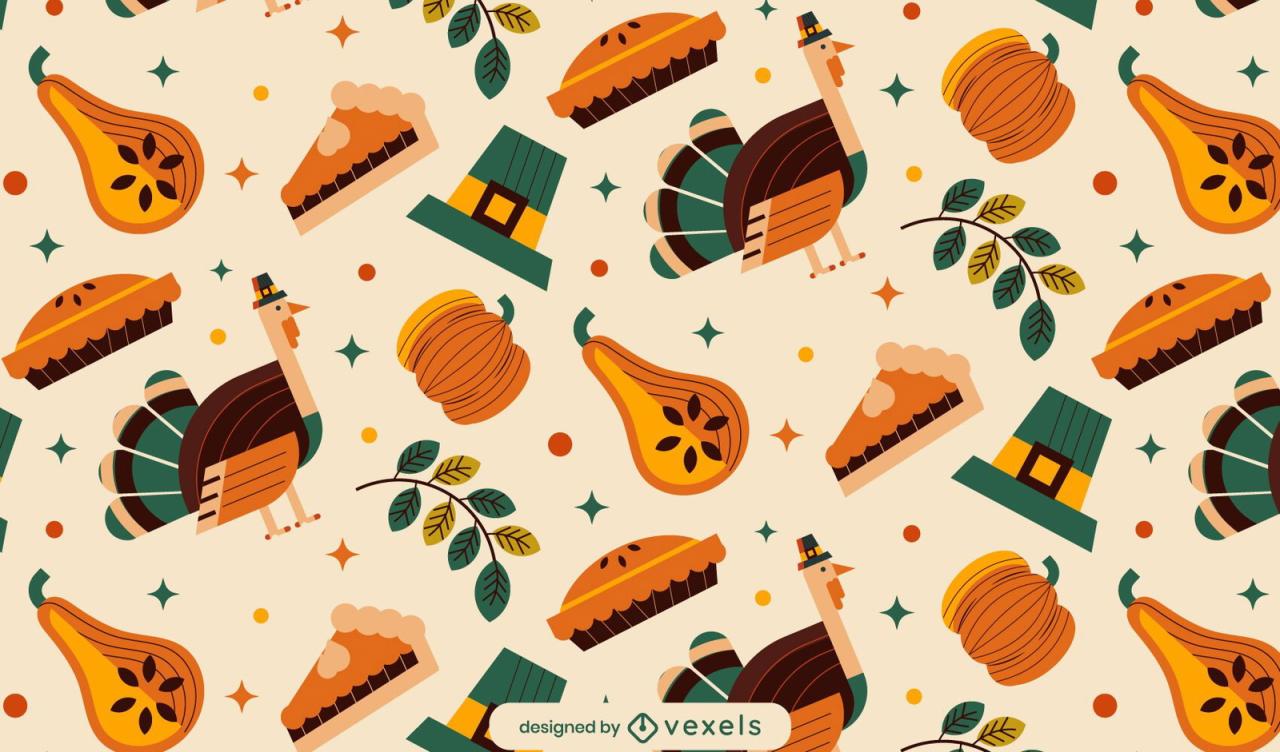
Best Thanksgiving Textures and Patterns
Best Thanksgiving textures and patterns: This year, let’s go beyond the usual turkey and stuffing! I’m diving deep into the sensory experience of Thanksgiving, exploring the delightful textures of our favorite dishes – from the creamy smoothness of mashed potatoes to the satisfying crunch of a perfectly flaky pie crust. We’ll also uncover the visual magic of Thanksgiving, examining the patterns and colors that create the warm, inviting atmosphere of the holiday.
Get ready to appreciate Thanksgiving in a whole new light!
We’ll journey from the tactile delights of perfectly roasted turkey to the visual feast of a beautifully set table. Imagine the rich browns and golden hues, the interplay of textures from rough burlap to smooth china, and the carefully arranged patterns of fall leaves and gourds. We’ll explore how these elements combine to create a truly unforgettable Thanksgiving experience, inspiring you to create your own stunning and delicious celebration.
Thanksgiving Food Textures

Source: freepik.com
Thanksgiving dinner is a feast not only for the palate but also for the senses, and texture plays a crucial role in the overall dining experience. The delightful interplay of textures—from the creamy smoothness of mashed potatoes to the satisfying crunch of a pie crust—contributes significantly to the holiday’s culinary magic. Let’s delve into the fascinating world of Thanksgiving food textures.
Mashed Potatoes
The texture of mashed potatoes is incredibly versatile, depending heavily on the preparation method. Using a ricer produces a remarkably light and fluffy texture, with delicate, airy pockets of air throughout. A potato masher, on the other hand, results in a slightly coarser, chunkier consistency, with some discernible potato pieces remaining. Adding cream or butter contributes to a richer, creamier mouthfeel, while incorporating milk results in a lighter, less dense texture.
Over-mixing can lead to a gummy, pasty texture, while under-mixing leaves the potatoes lumpy and uneven. The perfect texture is often a matter of personal preference, ranging from velvety smooth to rustic and chunky.
Roasted Turkey Breast and Dark Meat
The textural contrast between roasted turkey breast and dark meat is significant. The breast meat, when cooked properly, tends to be tender and moist, with a relatively delicate, slightly firm texture. It offers a clean, smooth bite. Dark meat, on the other hand, boasts a richer, more intense flavor and a noticeably different texture. It’s often more succulent and moist than the breast, with a slightly looser, more yielding texture due to its higher fat content.
This results in a more tender and juicy bite.
Pie Crusts
Pie crusts showcase a fascinating range of textures, depending on the recipe and baking technique. A perfectly flaky crust boasts layers of delicate, thin sheets that separate easily in the mouth, creating a delightful, airy sensation. A buttery crust offers a rich, melt-in-your-mouth experience, with a tender crumb that is intensely flavorful. A crumbly crust, often achieved through a high fat-to-flour ratio, provides a satisfying, slightly coarse texture with a pleasant crumble in each bite.
Each type offers a unique textural experience, adding complexity to the overall dessert.
Stuffing, Best thanksgiving textures and patterns
The texture of stuffing is highly variable, determined by the ingredients used and the cooking method. A bread-based stuffing, for example, can range from moist and tender to dry and crumbly, depending on the type of bread and the amount of liquid added. The inclusion of ingredients like sausage or vegetables adds textural complexity, introducing contrasting elements like the slight chewiness of sausage or the crispness of sautéed vegetables.
A stuffing baked in a casserole dish will often have a slightly firmer texture on the outside and a softer interior, while stuffing cooked inside the turkey tends to be more evenly moist and tender throughout.
Cranberry Sauce Texture Comparison
| Texture | Description | Preparation Method | Visual Impression |
|---|---|---|---|
| Whole Berry | Individual berries retain their shape and offer a burst of juicy texture when bitten into. | Simmered whole berries with minimal added sugar. | Distinct, whole berries visible in a slightly glossy sauce. |
| Jellied | Smooth, firm, and spreadable with a glossy sheen; a homogenous texture with no discernible berry shapes. | Simmered berries with added pectin or gelatin to set. | Uniform, translucent, and shiny consistency; a smooth surface. |
Thanksgiving Table Setting Patterns
Setting the Thanksgiving table is more than just arranging plates and cutlery; it’s about creating a warm and inviting atmosphere that reflects the spirit of the holiday. The patterns and colors you choose for your tablecloth, napkins, and placemats play a significant role in achieving this ambiance. A thoughtfully designed tablescape can elevate the entire Thanksgiving experience, making it even more memorable for you and your guests.Thanksgiving table settings often utilize a range of patterns to create a festive and visually appealing display.
The choice of pattern and color scheme can significantly impact the overall mood and style of the setting, from rustic charm to elegant sophistication.
Common Thanksgiving Tablecloth and Napkin Patterns
Plaid, floral, and geometric patterns are classic choices for Thanksgiving tablecloths and napkins. Plaid evokes a sense of warmth and tradition, often associated with fall harvests and cozy gatherings. Floral patterns, particularly those featuring autumnal blooms like sunflowers, chrysanthemums, and leaves, bring a touch of nature’s beauty to the table. Geometric patterns, on the other hand, offer a more modern and minimalist approach, allowing for a clean and sophisticated look.
The versatility of these patterns makes them adaptable to various Thanksgiving themes and personal preferences.
Visual Impact of Color Palettes
The color palette chosen for a Thanksgiving table setting significantly influences its overall aesthetic. Warm, earthy tones like burnt orange, deep reds, golden yellows, and browns create a rustic and traditional feel, reminiscent of autumn foliage. These colors evoke feelings of comfort and nostalgia, perfectly complementing the spirit of Thanksgiving. Conversely, a palette featuring cool blues, greens, and silvers can create a more elegant and sophisticated atmosphere.
A combination of warm and cool colors can also produce a balanced and visually interesting tablescape. The key is to select colors that harmonize and enhance the chosen patterns.
Example Thanksgiving Table Setting
Imagine a Thanksgiving table adorned with a tablecloth featuring a rich, burnt orange plaid pattern. The napkins are a coordinating deep red, subtly patterned with small, embroidered autumn leaves. The plates are a creamy off-white, providing a neutral backdrop that allows the vibrant tablecloth and napkins to take center stage. Scattered across the table are small bowls filled with acorns and colorful fall leaves, adding a natural touch to the setting.
The overall effect is warm, inviting, and deeply festive, perfectly capturing the essence of Thanksgiving.
Placemat Patterns Complementing Thanksgiving Themes
Choosing the right placemat pattern can further enhance the Thanksgiving table setting. For a rustic theme, woven placemats in natural fibers like jute or burlap provide a textured and earthy base. For a more elegant setting, linen placemats in neutral colors or with subtle embroidered patterns are an excellent choice. Geometric placemats in metallic tones can add a touch of modern sophistication, while placemats featuring autumnal leaf prints seamlessly integrate with the seasonal theme.
The choice of placemat should complement the tablecloth and overall color scheme.
Creative Patterns Using Natural Elements
Using natural elements to create unique patterns on the Thanksgiving table is a delightful way to add a personal touch and connect with the season’s bounty.
- Leaf Arrangements: Arrange fall leaves in symmetrical or asymmetrical patterns on the table runner or as individual place card holders. The varied colors and shapes of the leaves create a naturally beautiful and organic design.
- Acorn and Pinecone Displays: Scatter acorns and pinecones strategically on the table, creating a rustic and charming pattern. These elements add a tactile and visual dimension to the setting.
- Branch and Berry Garlands: Create simple garlands using branches and berries from your garden or local area. These natural elements add a touch of rustic elegance and a delightful autumnal fragrance to the table.
Visual Patterns in Thanksgiving Dishes
Thanksgiving is a feast for the eyes as much as it is for the stomach. The careful arrangement of food on a platter, the strategic use of garnishes, and even the way vegetables are layered in a casserole all contribute to the overall visual appeal of the Thanksgiving spread. Lighting plays a crucial role in enhancing these textures and patterns, making the photographs of your culinary creations even more enticing.
The Visual Impact of Food Arrangement on Platters
The strategic placement of different Thanksgiving foods on a platter creates visually appealing patterns. For instance, a spiral arrangement of roasted vegetables, alternating colors like bright orange carrots and deep green broccoli, can be both aesthetically pleasing and practical, allowing guests easy access to a variety of options. Similarly, a circular arrangement of cranberry sauce, surrounded by slices of turkey breast, creates a visually striking contrast of textures and colors.
A platter featuring a variety of textures – from the smooth surface of mashed potatoes to the crispy skin of the turkey – adds depth and visual interest. Consider using natural shapes and curves to avoid a stiff, uniform look.
A Comparison of Garnishing Techniques
Garnishing techniques significantly impact the visual appeal of Thanksgiving dishes. A simple sprig of fresh rosemary on a roast turkey elevates its presentation, adding a touch of rustic elegance. Finely chopped parsley sprinkled over mashed sweet potatoes provides a pop of green against the warm, earthy tones of the dish. In contrast, overly elaborate garnishes can sometimes detract from the main dish.
A balance between simplicity and sophistication is key. For example, while a complex arrangement of sculpted vegetables might look impressive, it may be less practical than a simpler, yet equally effective, garnish.
The Visual Appeal of Vegetable Arrangement in a Casserole
The arrangement of vegetables in a casserole directly influences its visual appeal. A casserole with vegetables neatly layered in alternating colors and textures creates a more inviting and appetizing appearance compared to a casserole with vegetables haphazardly tossed together. Consider using contrasting colors – vibrant red peppers against deep green spinach, for example – to create visual interest.
A visually appealing casserole also benefits from a strategic use of negative space, which helps to highlight the individual components of the dish. Think of a casserole with a spiral pattern of carrots and potatoes; the empty space between the vegetables helps to draw the eye and emphasize the pattern.
The Influence of Lighting on Food Photography
Lighting is paramount in Thanksgiving food photography. Natural light, especially soft, diffused light from a window, is ideal for showcasing the textures and patterns of food. Harsh overhead lighting can create unflattering shadows and wash out colors. Backlighting, on the other hand, can highlight the edges and contours of the food, creating a dramatic effect. Experimenting with different lighting angles and intensities allows for capturing the true beauty and depth of your Thanksgiving dishes.
For instance, side lighting can accentuate the textures of a pie crust, while overhead lighting might flatten the image and diminish the visual appeal.
A Visually Appealing Thanksgiving Dessert: Pumpkin Pie with a Pecan Crumble Topping
Imagine a slice of pumpkin pie, its smooth, rich orange filling contrasting beautifully with a crunchy, golden-brown pecan crumble topping. The swirls of the filling, visible through the slightly cracked surface of the pie, add another layer of visual interest. The textures are diverse – the creamy smoothness of the pumpkin filling, the satisfying crunch of the pecans, and the delicate flakiness of the pie crust – creating a symphony of sensations for the eyes and the palate.
The pattern of the pecan crumble, scattered artfully over the pie, adds a touch of rustic charm, completing the overall visual appeal of this Thanksgiving dessert.
Thanksgiving Decor Patterns and Textures: Best Thanksgiving Textures And Patterns

Source: vecteezy.com
Thanksgiving décor is more than just pretty decorations; it’s about creating a warm and inviting atmosphere that reflects the spirit of gratitude and togetherness. The careful selection of textures and patterns plays a crucial role in achieving this ambiance, transforming a simple gathering into a truly memorable celebration.
The textures and patterns we choose for our Thanksgiving decorations evoke specific feelings and memories. Rough textures like burlap can create a rustic, homespun feel, while the smooth surface of polished wood brings a sense of elegance and sophistication. The interplay of these different textures contributes to a rich sensory experience, making the Thanksgiving setting more engaging and appealing.
Common Textures in Thanksgiving Décor
The tactile elements of Thanksgiving décor are essential to its overall impact. Common textures used include natural materials like wood, burlap, and woven fabrics, which contribute to the autumnal theme. Knitted items, like blankets or decorative throws, add a cozy and welcoming touch. Metallic accents, such as copper or gold, introduce a touch of warmth and sophistication, complementing the natural textures.
The contrast between rough and smooth, coarse and fine, creates visual interest and depth.
The Impact of Texture on Thanksgiving Atmosphere
Different textures contribute significantly to the overall atmosphere of a Thanksgiving celebration. Rough textures like burlap and wood create a rustic and traditional feel, reminiscent of simpler times and harvests past. These textures evoke feelings of warmth, comfort, and nostalgia. In contrast, smoother textures, such as polished wood or glass, can lend a more elegant and sophisticated touch, creating a refined and formal ambiance.
The combination of these textures allows for a personalized approach, balancing rustic charm with modern elegance. For example, a rustic wooden table can be beautifully complemented by smooth, glass serving dishes.
Visual Impact of Thanksgiving Decoration Patterns
The patterns used in Thanksgiving decorations are equally important in setting the mood. Classic patterns such as autumn leaves, pumpkins, and harvest motifs instantly evoke the season. These traditional patterns create a familiar and comforting atmosphere, reminding us of cherished Thanksgiving traditions. More contemporary patterns, incorporating geometric designs or abstract representations of autumnal elements, can offer a fresh and modern take on the holiday aesthetic.
The use of repetitive patterns, like a repeating leaf print on a tablecloth, can create a sense of unity and harmony, while a mix of different patterns adds visual interest and dynamism.
Enhancing Textures and Patterns with Lighting
Lighting plays a vital role in enhancing the textures and patterns of Thanksgiving decorations. Warm, soft lighting, such as candlelight or the warm glow of string lights, accentuates the textures of natural materials like wood and burlap, creating a cozy and inviting atmosphere. Strategic lighting can also highlight specific patterns, such as the intricate details of a hand-knitted tablecloth or the vibrant colors of a patterned runner.
Conversely, harsh, bright lighting can wash out the subtle textures and patterns, diminishing their impact.
Thanksgiving Centerpiece Design: Texture and Pattern Interplay
Imagine a Thanksgiving centerpiece featuring a rustic wooden base, perhaps a reclaimed wood slice or a vintage crate. On this base, arrange a collection of pumpkins of varying sizes and colors – some smooth, some slightly bumpy – creating a textural contrast. A burlap runner, slightly frayed at the edges, adds a rustic touch. Intersperse the pumpkins with sprigs of autumn leaves in varying shades of red, orange, and yellow, creating a visually appealing pattern.
Okay, so I’m obsessed with finding the best Thanksgiving textures and patterns for my holiday videos this year – think cozy knits, warm wood grains, and glistening autumn leaves. To really up my game, I’ve been learning some serious video editing skills, checking out resources like this awesome guide on getting it on with youtube to improve my channel’s look.
Back to those textures though – I’m thinking a rustic, handcrafted feel will really make my Thanksgiving content pop!
Finally, add a few sprigs of evergreen for a touch of contrast and visual interest. The overall effect is a warm, inviting centerpiece that showcases a beautiful interplay of textures and patterns, reflecting the abundance and beauty of the autumn harvest.
Conclusive Thoughts

Source: vexels.com
So, as we wrap up this exploration of Thanksgiving textures and patterns, remember that it’s the details that truly make this holiday special. From the subtle variations in the texture of your mashed potatoes to the carefully chosen patterns on your tablecloth, each element contributes to the overall atmosphere and creates lasting memories. This Thanksgiving, take a moment to appreciate the sensory richness of the holiday, and let the textures and patterns enhance your celebration.
Frequently Asked Questions
What are some unusual Thanksgiving textures to try?
Consider adding candied pecans for a delightful crunch to your salad, or using a variety of heirloom pumpkins for different textures and colors in your pie.
How can I incorporate textures into my Thanksgiving centerpiece?
Combine smooth glass pumpkins with rough-hewn wood slices and textured fabrics like burlap for a visually interesting centerpiece.
What are some non-traditional color palettes for a Thanksgiving table?
Try a sophisticated palette of deep purples, greens, and golds, or a rustic palette of browns, oranges, and creams.
